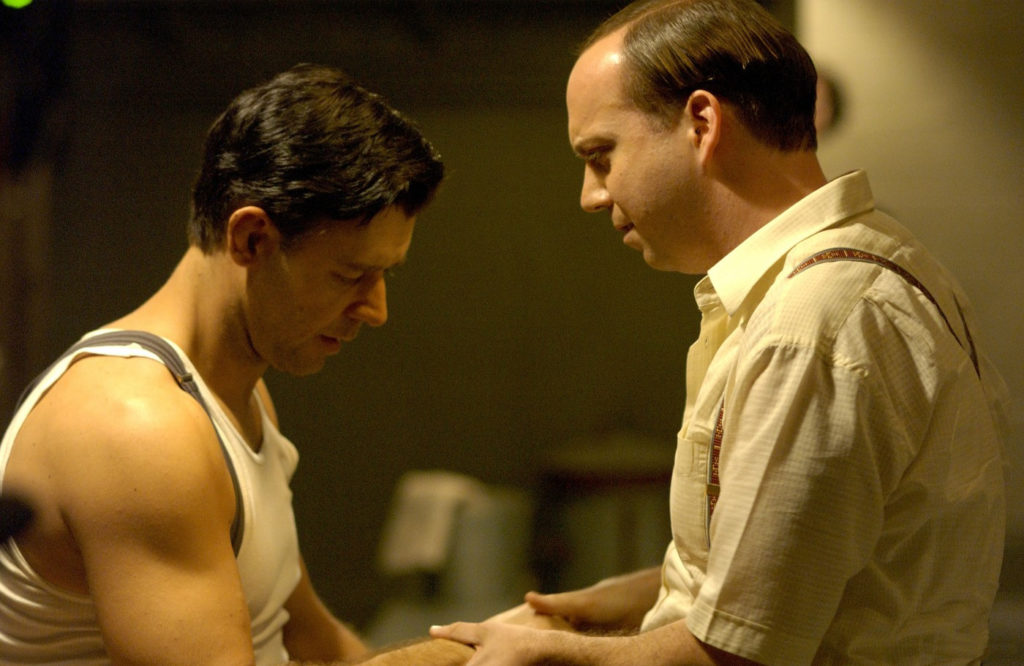Several sequences of Ron Howard’s “Cinderella Man” take place during hi-stakes boxing matches and title fights. But this is not a sports movie. It’s a human one, one that paints its characters in the highest esteem, its epoch complete and thorough. It’s also a film of slow pace, restraint, and character development often reserved for indie films, not Hollywood money makers. It features A-list actors but no show stealers: a tough bet that paid off for Howard, Russell Crowe, Renee Zellwegger, and others that line its run-time.
What “Cinderella Man” is, above all else, is a look at America during the time of the Great Depression. The film opens four years into this desolate period of human existence, and we feel the weight of its effect on those around it. The film opens to struggling prize fighter Jim “The Bulldog of Bergen” Braddock (Crowe), who walks into his dark, dank home that can only afford a few candles, his wife, a radiant Renee Zellwegger, watering down their only bottle of milk to make it last longer. “Who needs cows?” she jokes behind pain. A nice family meal ensues; but we know hard times are ahead, not just for Braddock, but for millions of other Americans as well.
I suppose “Cinderella Man” – which is based on the real life struggle of the boxer Jim Braddock – to be comparable to films like “Rocky” in many ways. They’re both about underdogs, both about rags to riches mentality. Braddock becomes a symbol to the neighborhoods of New Jersey. One of the most powerful scenes of the film – of which there are many – shows his wife entering a church to pray for Braddock before a fight. “So did they,” a priest intimates to a packed house all pulling for their unsung hero who they feel is fighting for them all.

They all have terrific chemistry together – even Baer as the villain, who seems to work slightly better than “Rocky’s” Apollo Creed, who just came off as cocky and arrogant for the sake of being cocky and arrogant. Bierko makes us believe he actually thinks he is better than Braddock. He’s also killed two previous boxers in the ring, his punches land like brick walls, and he convinces us early on he’s a force to be reckoned with. Of course he is the champ, and Braddock the underdog; and while convention tells us they will end up fighting together, it happens in a very hyped up and believable way that makes the picture that much deeper.
This of course is interspersed with intricate camera shots of some of the more despairing hallmarks of the Great Depression, such as soup lines, lines for public assistance, desperate lines of hundreds vying for the five or six open factory jobs, and the many ‘Hoovervilles’ unfortunate souls lived in to save up on rent. And for good reason. Braddock and his wife almost lose their children due to not being able to turn their heat on. Poverty in this movie is seen as a very real thing, not an idea, but an attack on independence and quality of life. In the film’s most painful scene, Braddock visits his old boxing manager, promoter, and others in a tavern and must ask for a handout. Crowe’s acting is superb; we know how hard this is for him, how painful, but we also know the strength he exhibits in doing so.
“Cinderalla Man” is just a remarkable and beautiful picture. It paints the era of the Great Depression deeply and painfully. Its acting, cinematography, and score are all top notch. It’s not so much a feel good film as it is a portrait of James Braddock – all he stood for and all he stood to lose – and resolves itself believably and with finality. Do yourself a favor and watch this powerful film. You won’t be disappointed.

